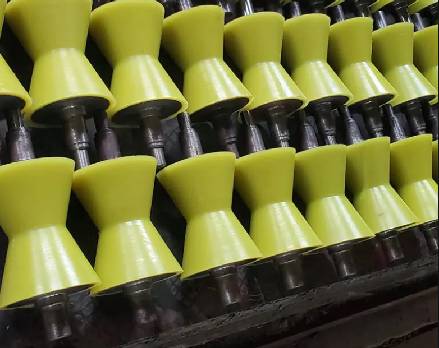 Afrikaans
Afrikaans  Albanian
Albanian  Amharic
Amharic  Arabic
Arabic  Armenian
Armenian  Azerbaijani
Azerbaijani  Basque
Basque  Belarusian
Belarusian  Bengali
Bengali  Bosnian
Bosnian  Bulgarian
Bulgarian  Catalan
Catalan  Cebuano
Cebuano  Corsican
Corsican  Croatian
Croatian  Czech
Czech  Danish
Danish  Dutch
Dutch  English
English  Esperanto
Esperanto  Estonian
Estonian  Finnish
Finnish  French
French  Frisian
Frisian  Galician
Galician  Georgian
Georgian  German
German  Greek
Greek  Gujarati
Gujarati  Haitian Creole
Haitian Creole  hausa
hausa  hawaiian
hawaiian  Hebrew
Hebrew  Hindi
Hindi  Miao
Miao  Hungarian
Hungarian  Icelandic
Icelandic  igbo
igbo  Indonesian
Indonesian  irish
irish  Italian
Italian  Japanese
Japanese  Javanese
Javanese  Kannada
Kannada  kazakh
kazakh  Khmer
Khmer  Rwandese
Rwandese  Korean
Korean  Kurdish
Kurdish  Kyrgyz
Kyrgyz  Lao
Lao  Latin
Latin  Latvian
Latvian  Lithuanian
Lithuanian  Luxembourgish
Luxembourgish  Macedonian
Macedonian  Malgashi
Malgashi  Malay
Malay  Malayalam
Malayalam  Maltese
Maltese  Maori
Maori  Marathi
Marathi  Mongolian
Mongolian  Myanmar
Myanmar  Nepali
Nepali  Norwegian
Norwegian  Norwegian
Norwegian  Occitan
Occitan  Pashto
Pashto  Persian
Persian  Polish
Polish  Portuguese
Portuguese  Punjabi
Punjabi  Romanian
Romanian  Russian
Russian  Samoan
Samoan  Scottish Gaelic
Scottish Gaelic  Serbian
Serbian  Sesotho
Sesotho  Shona
Shona  Sindhi
Sindhi  Sinhala
Sinhala  Slovak
Slovak  Slovenian
Slovenian  Somali
Somali  Spanish
Spanish  Sundanese
Sundanese  Swahili
Swahili  Swedish
Swedish  Tagalog
Tagalog  Tajik
Tajik  Tamil
Tamil  Tatar
Tatar  Telugu
Telugu  Thai
Thai  Turkish
Turkish  Turkmen
Turkmen  Ukrainian
Ukrainian  Urdu
Urdu  Uighur
Uighur  Uzbek
Uzbek  Vietnamese
Vietnamese  Welsh
Welsh  Bantu
Bantu  Yiddish
Yiddish  Yoruba
Yoruba  Zulu
Zulu conveyor belt scraper
Conveyor Belt Scraper An Essential Component for Efficient Material Handling
In various industrial settings, conveyor belts serve as critical components in the transportation of materials, ranging from raw materials to finished products. However, as with all machinery, these systems require regular maintenance to ensure their longevity and efficiency. One of the often-overlooked yet essential components of a conveyor system is the belt scraper. This article explores the significance of conveyor belt scrapers, their types, and their impact on operational efficiency.
What is a Conveyor Belt Scraper?
A conveyor belt scraper is a device installed on conveyor systems to remove residual materials that adhere to the conveyor belt's surface. As materials move along the belt, they often leave behind debris, dust, and sticky substances, which can accumulate over time. This residue not only affects the belt's performance but can also lead to costly downtime and maintenance issues. Scrapers play a vital role in maintaining the cleanliness of the conveyor belt, thus ensuring consistent material flow.
Types of Conveyor Belt Scrapers
There are several types of conveyor belt scrapers, each designed for specific applications and material types
. The most common types include1. Primary Scrapers Usually installed at the discharge end of the conveyor, primary scrapers are the first line of defense against material carryback. They are designed to remove large quantities of bulk material and are typically made of resilient materials like polyurethane or rubber.
2. Secondary Scrapers These are used in conjunction with primary scrapers and are positioned just after the primary scraper. Secondary scrapers are designed to pick up any residual material that the primary scraper may have missed. They are often made from softer materials to avoid damaging the belt.
3. Vacuum Scrapers This innovative technology uses a vacuum system to remove material from the belt's surface. Vacuum scrapers are particularly effective for fine materials and can significantly reduce carryback.
conveyor belt scraper

4. Blade Scrapers These feature a flat blade that can be adjusted to maintain contact with the belt surface. Blade scrapers are versatile and can handle a variety of materials, making them suitable for different industrial environments.
Benefits of Using Conveyor Belt Scrapers
The integration of conveyor belt scrapers offers numerous advantages to industrial operations.
- Improved Efficiency By removing carryback, scrapers ensure that the conveyor system operates at optimal efficiency. This leads to consistent material flow and reduces the risk of jams or blockages.
- Reduced Maintenance Costs Regular cleaning of the conveyor belt with scrapers minimizes wear and tear on the belt and other components, leading to lower maintenance costs and prolonged equipment life.
- Enhanced Safety Carryback can create hazardous conditions in the workplace, such as slippery surfaces or fire hazards due to flammable materials gathering around the conveyor system. Scrapers help to mitigate these risks, promoting a safer working environment.
- Environmental Benefits By minimizing material loss, scrapers contribute to more sustainable operations. This helps reduce waste and supports companies’ efforts to decrease their environmental impact.
Conclusion
In conclusion, conveyor belt scrapers are indispensable components in material handling systems. Their ability to effectively remove carryback ensures that conveyor belts operate smoothly and efficiently, thereby enhancing overall productivity. Industries that invest in high-quality scraping systems not only benefit from reduced maintenance costs but also promote safer and more sustainable operations. As technology continues to advance, the development of more efficient and effective scrapers will further revolutionize the way materials are handled in various industrial sectors.
-
Revolutionizing Conveyor Reliability with Advanced Rubber Lagging PulleysNewsJul.22,2025
-
Powering Precision and Durability with Expert Manufacturers of Conveyor ComponentsNewsJul.22,2025
-
Optimizing Conveyor Systems with Advanced Conveyor AccessoriesNewsJul.22,2025
-
Maximize Conveyor Efficiency with Quality Conveyor Idler PulleysNewsJul.22,2025
-
Future-Proof Your Conveyor System with High-Performance Polyurethane RollerNewsJul.22,2025
-
Driving Efficiency Forward with Quality Idlers and RollersNewsJul.22,2025





























